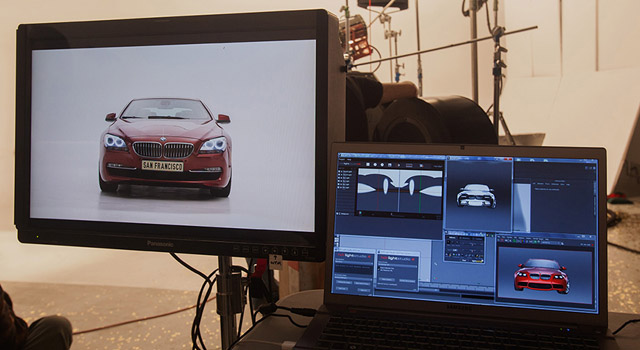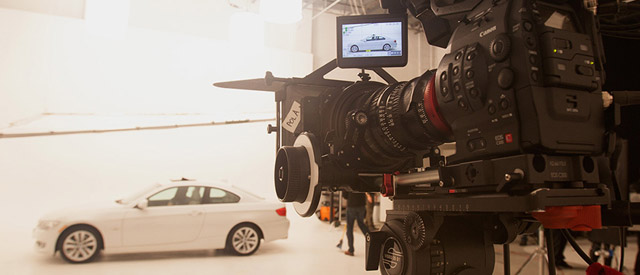Thanks to Matt Workman for letting us re-post this interesting article about his unique HDR Light Studio previs workflow for a video shoot.
Author: Matt Workman
In this article I walk through my process of lighting a “Social Videos Series” for BMW and the Super Bowl XLVII. First, visualizing the framing and angles in Autodesk Maya, then designing the lighting and reflections using HDR light Studio, and finally translating those results into a real world lighting set up.
INTRO / CONCEPT
In January 2013, producer Daniel Roversi @ KBS+ contacted me about a “Social Videos Series” for BMW. I was given several reference photos of what angles we were looking to capture and some basic CAD files of the cars. I collected a large sample of BMW renderings and photos from their previous campaigns as reference for lighting and framing. BMW is a very well known brand so I wanted the cars “read” as BMW and to stick with their overall lighting style.
“Part of the concept is the ability to react almost in real-time to events. We estimated, approved, pre-produced, shot and edited in 10 days.” It’s a new frontier in advertising where brands are in direct contact with their customers through outlets like Facebook, Youtube, and Twitter. When the Ravens won the Super Bowl the “Winner” spot was released within seconds.
FRAMING / ANGLES
Using the floor plans of the stage and some reference photos I had taken on the tech scout, I recreated the stage and cyc in 3D using Autodesk Maya. It was important that any angles and lighting setups I created in 3D could be possibly within the physical restrictions of the stage. After calculating where the camera would need to be for each angle (front, three quarter front, and profile) with Maya’s 3D camera I was ready to start lighting.
LIGHTING PREVIS



